What is a Turbidity Curtain?
Imagine a floating barrier, silently protecting a delicate underwater ecosystem from a cloud of murky sediment. That’s the essential role of a turbidity curtain, also known as a silt curtain or barrier. In essence, it’s a temporary wall deployed in water bodies to control the movement of suspended particles like soil, clay, and debris.
American Marine, a division of Elastec, has been manufacturing quality turbidity curtains since 1967. We offer some models in-stock from our online store. Contact us to request turbidity curtain pricing for other models. View DOT requirements by state.
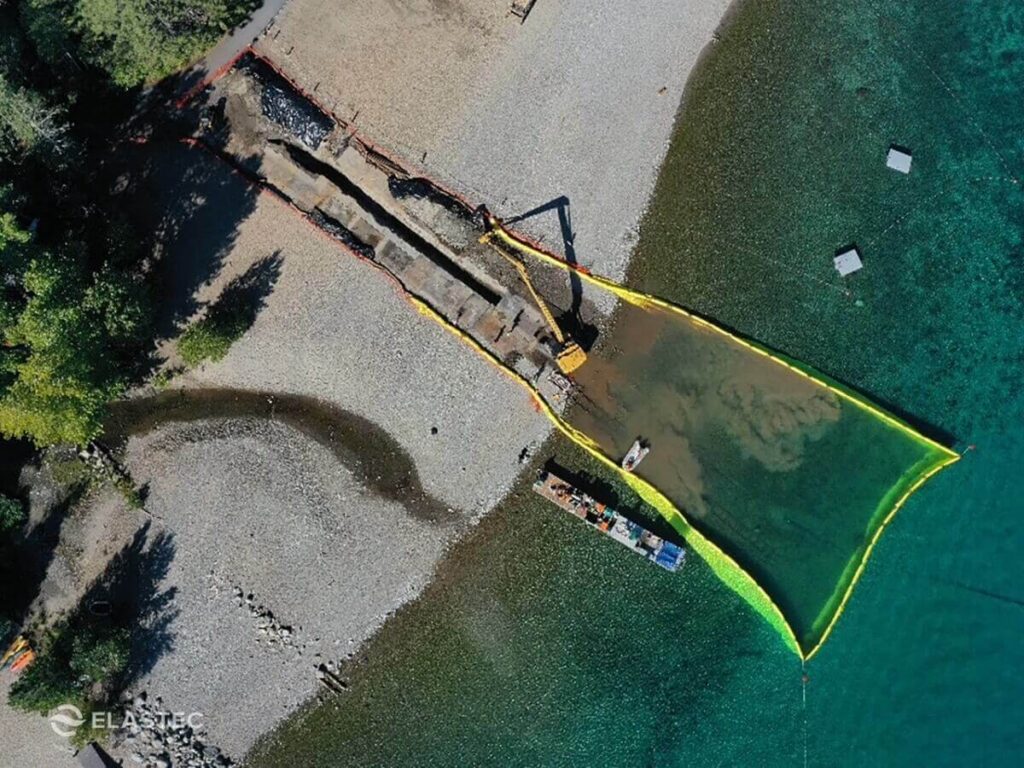
How Does it Work?
A typical turbidity curtain comprises three main parts:
- Floatation: Made of buoyant materials like foam or plastic, this keeps the curtain upright and visible at the water’s surface.
- Skirt: Fabricated from woven geotextiles or impermeable sheeting, the skirt hangs below the floatation, reaching towards the bottom of the water body. Its length and material type depend on the specific application and water conditions.
- Ballast: Weights, usually chains or concrete blocks, anchor the curtain in place, ensuring it remains effective despite currents, waves, or tides.
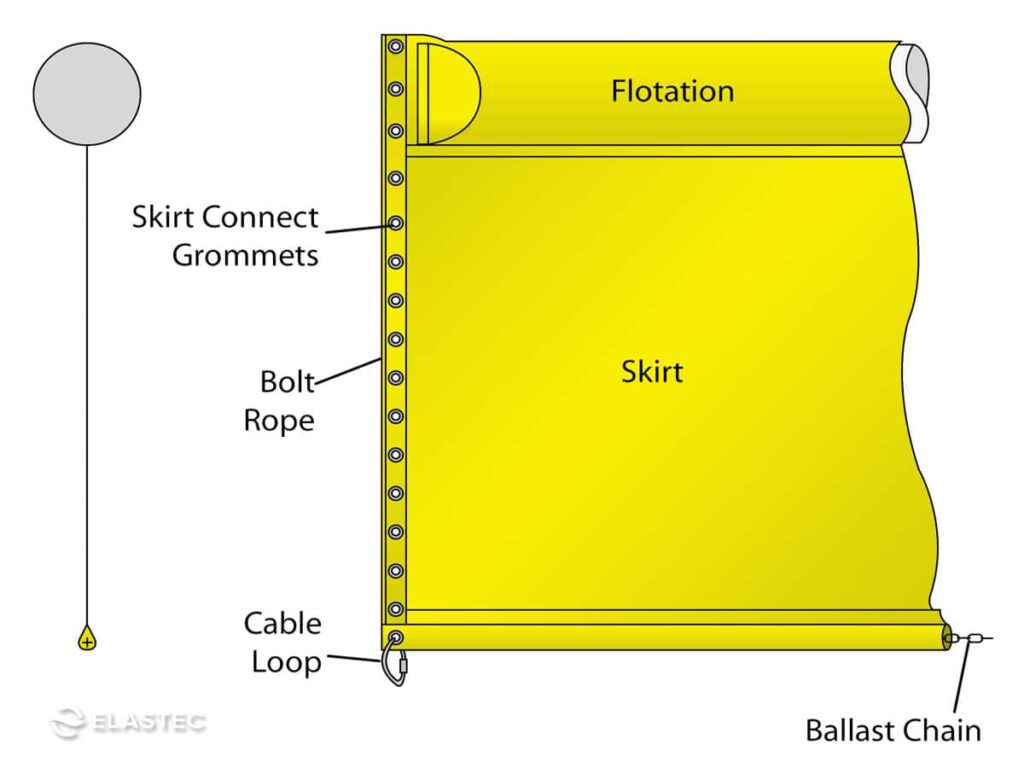
Types of Turbidity Curtains:
Depending on the water conditions and project needs, different types of turbidity curtains exist:
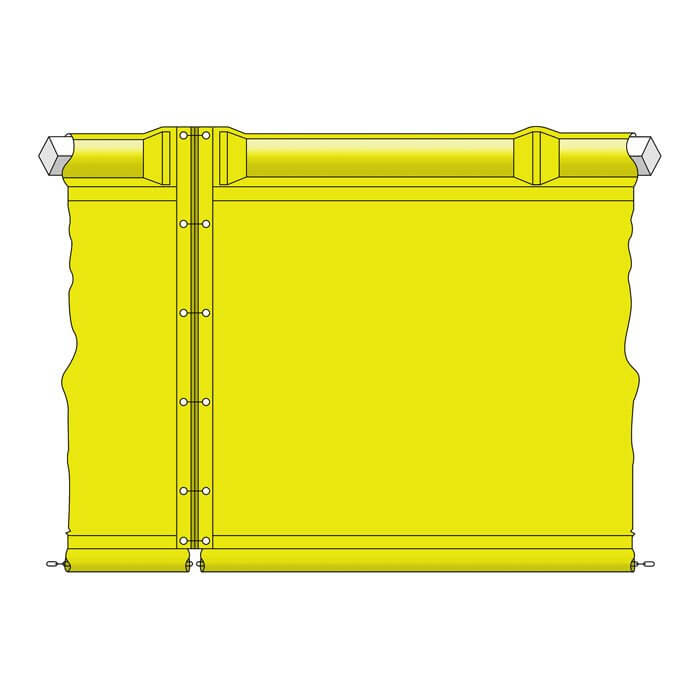
Type 1: Suitable for calm water, with a lightweight skirt for easy deployment.
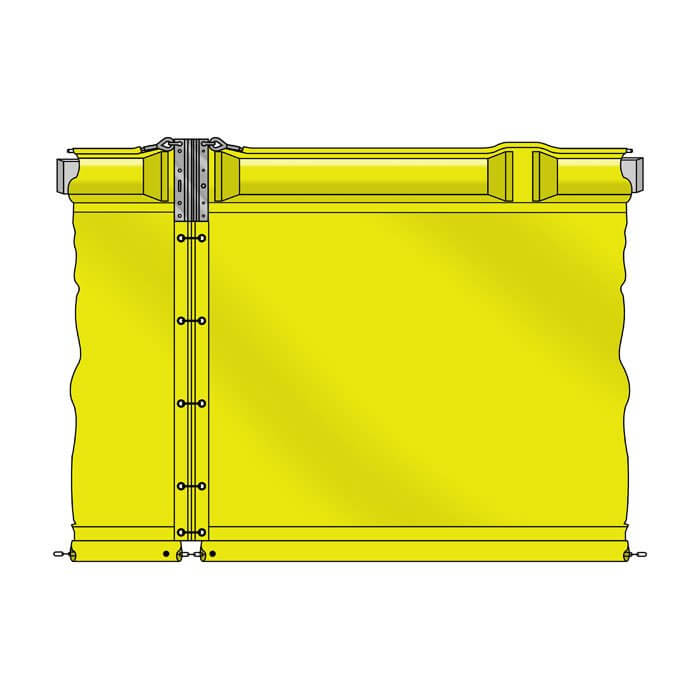
Type 2: Handles moderate currents with a heavier skirt and additional reinforcement.
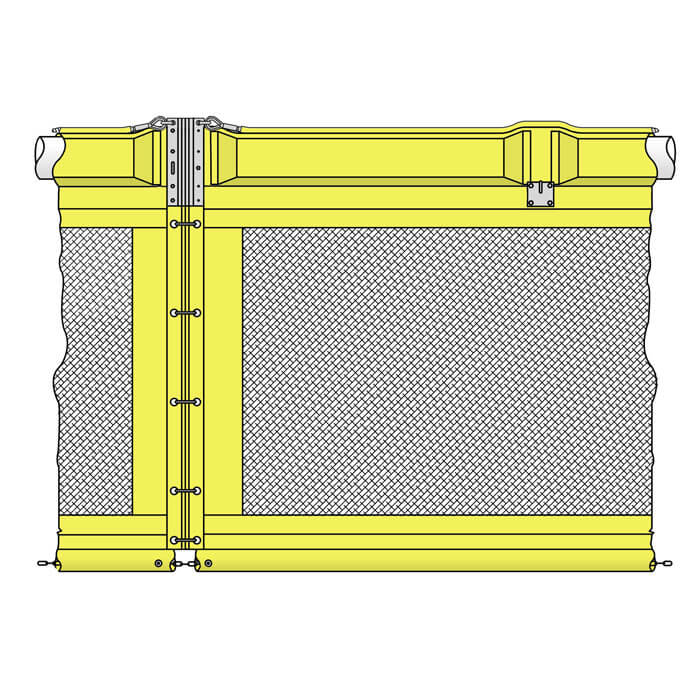
Type 3: Designed for challenging environments like fast-flowing rivers, with robust construction and anchoring systems.
Why Are They Important?
Construction projects, dredging activities, and even heavy rainfall can stir up sediments in water bodies. This “turbidity” can have dire consequences:
- Harm aquatic life: Suspended particles clog fish gills, suffocate sensitive plants, and reduce light penetration, hindering photosynthesis and food production.
- Pollute downstream areas: Uncontrolled sediment flow can spread contaminants and disrupt delicate ecosystems further downstream.
- Degrade water quality: Increased turbidity makes water cloudy, hindering recreational activities and impacting drinking water sources.
Applications of Turbidity Curtains:
These versatile barriers find use in various situations:
- Construction sites: Confining sediment runoff generated by excavation, pile driving, and other activities near water bodies.
- Dredging operations: Containing disturbed sediments during dredging projects to minimize environmental impact.
- Shoreline restoration: Protecting sensitive areas during restoration activities or preventing erosion.
- Oil spill containment: Limiting the spread of oil slicks and facilitating cleanup efforts.
- Aquaculture: Creating enclosed, protected areas for fish farming.
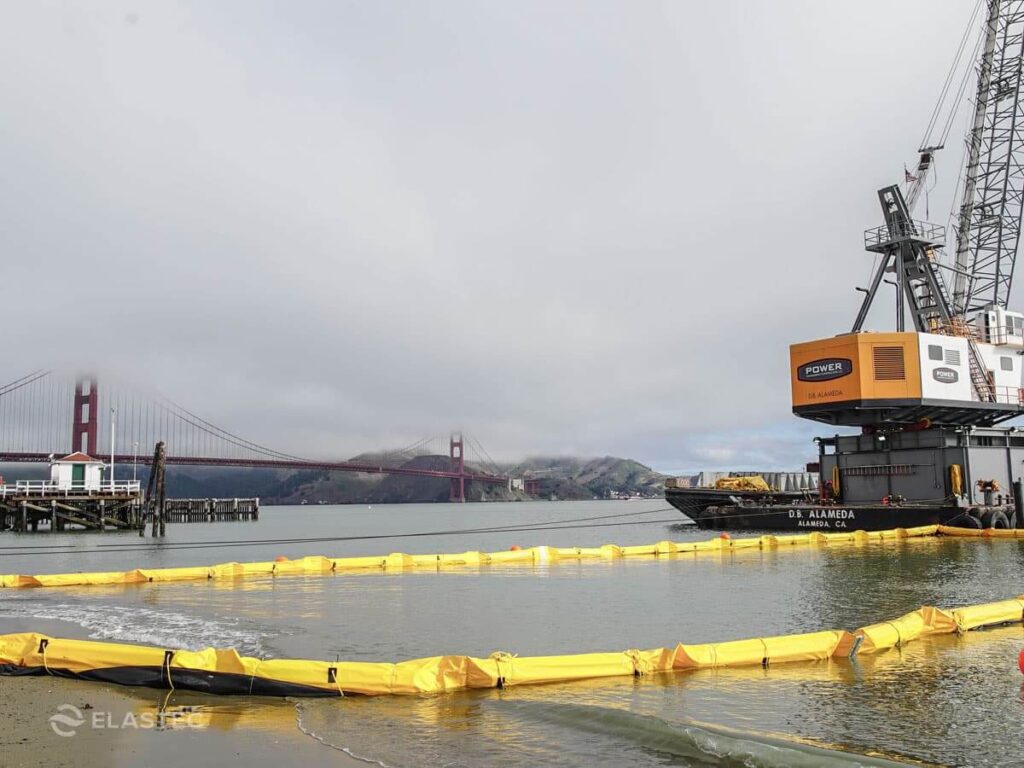
Choosing the Right Turbidity Curtain:
Several factors influence the selection of a suitable curtain:
- Water depth and conditions: Consider current speeds, wave action, and bottom topography.
- Purpose and regulations: Understand the specific project requirements and any local environmental regulations.
- Material and durability: Choose materials based on expected environmental stressors and longevity needs.
Turbidity curtains play a crucial role in protecting our waterways from harmful sediment pollution. By understanding their function and various applications, we can ensure responsible construction practices and safeguard the health of our aquatic ecosystems. Remember, clean water is vital for all, and turbidity curtains play a vital role in keeping it that way. Contact us about your project today so we can recommend the turbidity curtain to meet your needs.
TURBIDITY CURTAIN QUESTIONNAIRE
In order that we may recommend the best Turbidity Curtain for your project, please provide the following information. We have included some questions that will help us better understand your needs. Please answer as many as possible. If the flow rate is high, Elastec can provide modeling data to determine anchor spacing and feasibility of systems.
